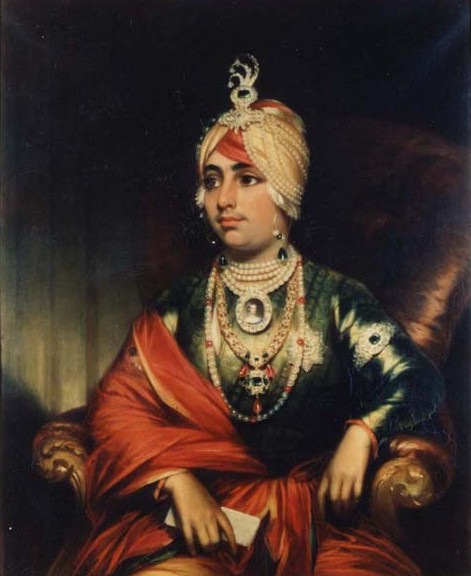Publicity swirling
around Amanda Knox and her “cri du coeur,” remind me of earlier poignant “cries
from the heart” by two other women, both incarcerated.
Without access to pen
and paper, the pair used needle and thread to record their thoughts. Their
individual situations differed from Amanda’s, and from one another. Each woman
had faith that her work would reach readers beyond the walls imprisoning her.
Each produced astounding samplers.
In fact,
Lorina, who was born in, Norfolk, was an inmate in the lunatic ward of the Workhouse
in Yarmouth, UK between 1901-5. At the
time, she was in her sixties.
The curator of the Norfolk Museum
and Archaeology Service (NMAS), which owns one of Lorina’s two known embroideries,
describes the samplers as “letters.” The three-metres text is stitched
crudely in capital letters, probably on scrounged bits of coloured cloth which
she pieced together and decorated with stump work. The NMAS letter is improbably addressed to a
maharajah.
 |
| Duleep Singh from Wikipedia |
Lorina’s text is
rambling, chaotic, sarcastic, and at times really sexually frank for Victorian
times. Reference to a maharajah, an illegitimate child of Queen Victoria, and Jarrold’s stationery
store read like a rant by a deranged
person, who fanaticized. Yet, research by the auction house Christie's which sold one of her embroideries in
2002, notes:
The
'Maharajah of Kelvedon' presumably refers to Duleep Singh who lived at Elvedon
near Thetford.
I google Jarrod’s. The family is still in
business, selling stationery too, after 240 years! So, how much of what Lorina
says is true? Was she deranged before her brother committed her to the asylum?
Or did the horrid place tip her into insanity? We are not likely to find out.
Nevertheless, it is fascinating that her embroideries figure as
documents/exhibits on mental health in two British collections.
Until March
2014, the NMAS has two of Lorina’s
letters on display at the Time and Tide Museum in Great Yarmouth. They are part of
an exhibition focusing on how textile gives
“voice” and serves as a means of
coping with stress. Lorina’s second
piece is on loan from the Thackeray Medical Museum
in Leeds. The Bulwer embroideries are
certainly unusual case history notes!
Titia
Gorter and her samplers are diametric opposites of Lorina and hers. But, they
render Titia’s “voice” just as faithfully.
Titia lived in The Hague, the Netherlands in
the 1940s. During the Nazi occupation of her homeland, she joined the
Resistance movement that smuggled information and people out of Holland to the UK. Titia
was far from deranged. She was a translator in her 60s’ and probably well aware
of the risks she took and her possible fate.
 |
| Sampler by Titia Gorter in the collection of the Amsterdam Verzetsmuseum |
In that
year, spent in prison’s solitary confinement, Titia stitched her daily routine,
thoughts and hopes into a series of three remarkable embroideries, now in the
collection of the Amsterdam Verzetsmuseum.
Titia’s
samplers are well planned and classically structured. The stitching is neat and
exquisitely precise, even if it is on scraps of her white sheets. Titia’s
“cries from the heart” take the form of original verses she composed to keep her mind and fingers
occupied.
They rail against evil, not
persons. They exhort her to be brave. Then there are Titia’s optimistic, sometimes humorous drawings
in thread, too. In anticipation of Christmas, she stitched a pine tree complete
with decorations. As ecumenical as she was, Titia, a devote
Christian, included a Jewish menorah, too.
 |
| From Titia Gorter's "Christmas" sampler in the collection of the Amsterdam Verzetsmuseum |
The
exhibition in Great Yarmouth
confirms what we embroiderers know. Every stitch we make is a stab at
communicating: our love of colour and
texture, or our attitude toward our subject, or our regard for the person to
whom we give our embroidery. These, too, are messages from the heart. But few of our embroideries have “voice.” And thank goodness for that. Aren’t we fortunate not to have been dealt
the destinies that inspired Lorina and Titia? I, for one, thank my lucky stars.
No comments:
Post a Comment